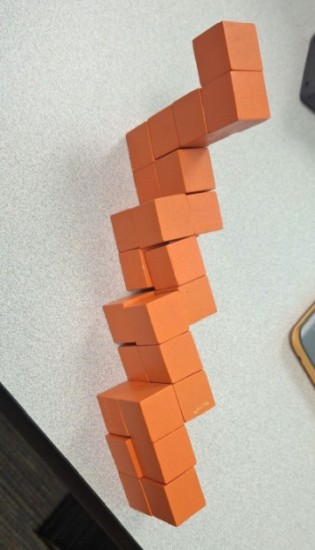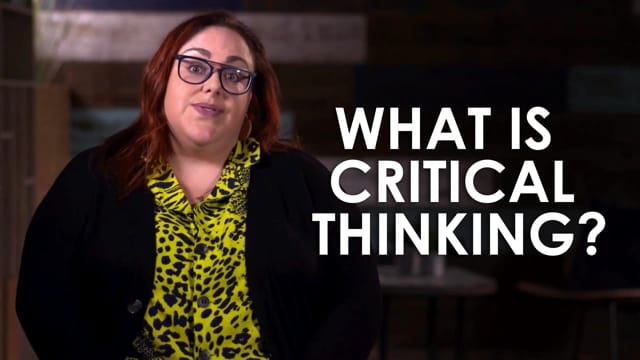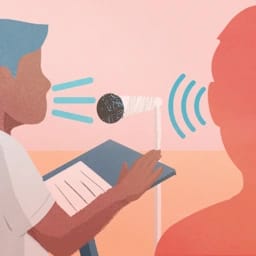10 Ideas to develop critical thinking skills in your students
In this guide
- The importance of critical thinking in the classroom
- Essential critical thinking skills students should learn
- Questioning techniques to build critical thinking
- Activities that encourage critical thinking skills
- Writing activities that encourage critical thinking skills
- Assessing and tracking students progress in critical thinking
The importance of critical thinking in the classroom
Teaching critical thinking is pivotal to success outside school but the classroom is the perfect environment to teach students the skills that they need to think critically.
We want students to function to the best of their ability in society. This requires that students make good, well thought out decisions. People that think critically are more likely to communicate more effectively, deal with challenges more calmly and have more advanced problem solving skills.
Teaching critical thinking skills in the classroom can help students to develop the skills they need to contribute meaningfully to the world they inhabit.
Essential critical thinking skills students should learn
While there are many critical thinking skills, there are three that are pivotal for students to master.
Inferencing, problem-solving, and evaluating information are of the utmost importance for students to learn because they impact other critical thinking skills.
1) Inferencing
Inferencing is the ability to draw a conclusion based on evidence.
Questions that ask students to draw conclusions, infer, or answer why, require students to make inferences.
Students often struggle with making inferences because they do not use the evidence found within the text, chart, or data to draw their conclusion. Many of them guess or choose an answer that sounds like it might be correct because it vaguely says something from the text.
For students to truly master the skill of inferencing, they must learn how to use evidence to draw and support their conclusions. I teach this in my English lessons by requiring students to underline their evidence and use it when giving a verbal or written response.

2) Problem-solving
The ability to problem-solve is a must-have skill to succeed in life!
We are faced with problems every day. Some problems have simple solutions and some are more complex. No matter the size of a problem, critical thinking skills enable a person to address the problem.
Over the past few years of teaching, it has become common for my students to give up as soon as something becomes even a little difficult. Problem-solving skills can help to alleviate this issue.
Students need the skills that help them to develop resilience skills – how to form a plan, try various options, evaluate the options, and solve a problem.
Through learning to solve a problem, students develop the ability to persevere. They learn what it means to try, to fail, and to try again.
3) Evaluation of information
Evaluating information for relevance, usefulness, and authenticity is an invaluable skill rather than taking information at face value.
In today’s world, fake news and AI generated information is all around us. Critical thinking skills can teach students how to evaluate information and use it effectively.
Knowing when something is legitimate information can help students to avoid misinformation and to make informed decisions.
Today’s students have become reliant on information gained from ‘accurate’ sources such as TikTok. As the internet has expanded beyond a place to search for information, it has become even more important to be able to discern what is true and useful and what is not.
Questioning techniques to build critical thinking
1) Open-ended questions
One of the best techniques a teacher can use to develop critical thinking skills is to ask open-ended questions. Open-ended questions require students to think about their responses, not simply regurgitate information. They also encourage and promote discussion rather than monosyllabic responses.
Wait time is also an aspect of open-ended questions that a teacher must consider. These types of questions require more thinking power to answer. Allowing wait time can initially be hard for teachers but gives students time to consider their responses and allows not only for a deeper understanding of subject matter but encourages robust discussion in your classroom..
Wait time is sometimes difficult for teachers to implement when we are working to a lesson or syllabus timeline. We want to keep the lesson moving and do not have the time to allow students to struggle – we need to move on to the next thing.
However, giving wait time allows students to critically process the information and gives the opportunity for productive struggle. Productive struggle helps students internalise learning and develops deeper thinking skills.

2) Student developed questions
A hallmark of critical thinking is placing more of the thinking responsibility on the learner.
Student developed questions help students learn how to think critically because they must consider their audience’s response. They must develop questions that address the subject matter but also require the learner to think critically.
Both types of questioning are types of inquiry-based learning strategies.
- Inquiry-based learning pushes students to think through a solution by asking questions.
- Open-ended questions help students to do their own thinking instead of being given an answer.
Through this type of learning, students begin to develop better questioning skills.
Activities that encourage critical thinking skills
1) Logic puzzles
Puzzles that require students to sort through information and use that information to solve a problem help critical thinking skills to develop.
There are many sites you can visit to print these types of puzzles. Some, like this one, allow puzzles to be solved both on paper and digitally. Challenging students to think and consider all angles of a problem is a useful skill that can then transfer to other areas of their lives.
Sudoku puzzles are a grid puzzle that requires the solver to fill a 9×9 grid with the numbers 1-9. The challenging part is that the numbers can only appear once in each row, column, and 3×3 square.
Solving this type of puzzle requires students to develop deductive reasoning skills and to learn the process of elimination.
2) Building puzzles
Building puzzles are a great way to include hands on critical thinking skills. My husband, a secondary school maths teacher, does this type of puzzle a couple of times a week. The students are always engaged and enjoy the challenge.
One sort of building puzzle is soma cubes. These are irregular shaped blocks that can be reconfigured into various forms. One of the configurations can be displayed on the board and students can use the blocks to create it. The blocks can be purchased in irregular shapes or you can make your own sets.
These pictures are students in my husband’s class working on their cubes. I am planning to introduce this activity into my own classroom in the near future.


3) Philosophical chairs
Debating a topic with evidence develops critical thinking skills.
Philosophical Chairs takes these skills further and is an activity we have successfully done in my AVID classroom.
Unlike a traditional debate, the goal is not necessarily to win, but to present your arguments logically and with good supporting evidence.
Directions:
- Present a topic that would result in others agreeing or disagreeing.
- Students brainstorm and develop reasons why someone would agree or disagree with the presented topic. This can be done in groups or individually.
- Students choose a starting statement and position.
- Both sides take turns presenting their arguments.
- This activity requires students to use academic language and to develop appropriate rhetoric skills.
- After the activity, students reflect on what they learned about the topic, their position, and the opposing position.
This can be done in writing or verbally. Try some different classroom debate ideas that would work well with the Philosophical Chairs activity.
4) Escape rooms
An escape room requires a person to use logic, details, and critical thinking skills to “escape”. There are a variety of options online that can be done in small groups, as a whole group, or individually. These from the Shelburne Museum in Vermont, can be completed digitally and are a fun way for students to be introduced to the concept.
Escape rooms can also be created by teachers. Google or Microsoft forms can be used to create a digital escape room where students must solve puzzles to move to the next question. They can be created to reinforce topics in any subject matter including maths, science, and literature.
In small groups, students can create an escape room that includes questions about a topic learned in class.
Student created escape rooms can be a fun and creative way to implement and encourage not only problem solving skills but also encourage social and group work skills in your classroom.
Writing activities that encourage critical thinking skills
Developing critical thinking skills through writing is another useful tool for students. It allows them to not only think, but to express their ideas in a productive format.

1) Mind mapping
Mind mapping is a way of organising information around a central topic. It is often used for brainstorming new topics in class. It can also be used for note-taking and decision-making processes.
A central topic or idea is identified and placed in the centre or top. From that central idea lines and bubbles or boxes are used to connect further information. Connecting ideas and concepts within a mind map provides the basis of critical thinking skills.
2) Persuasive writing
Writing to convince someone or to change their mind is also a way to increase critical writing skills. Effective persuasive writing requires students to formulate pertinent points and find and provide evidence to support these arguments.
Persuasive writing also helps students to develop analytical skills which are important for problem solving and communication. Effective communication is vital for students to learn as how we communicate affects our personal and professional lives. Relevant communication skills can be lacking in the mainstream classroom for a number of reasons and it is important that students are able to identify and communicate effectively in a number of different environments.
3) 20 words
Challenge! What if you could only use twenty words when writing?
This activity allows students to consider that scenario and to apply it to their writing!
Students choose twenty words and use those words to write a paragraph. To make this more challenging, give students a specific topic or focus for their writing.
- Perhaps students need to explain how to do a maths problem using only 20 words? Or can they explain a scientific process such as the water cycle using only 20 words?
Regardless of the topic, twenty words is the limit. This requires students to consider what words hold the most importance in their writing. They will need to carefully consider both academic words as well as smaller words such as conjunctions, and prepositions.
4) Fact vs. fiction
The ability to discern real information from fabricated or exaggerated information is both an important critical thinking skill and a life skill. This ability is what helps us determine when an email is spam or if an individual is trying to deceive us.
The internet has made it difficult for students to evaluate information critically. The ability to search for the answers we need (or want) is at our fingertips. We can find information to confirm or deny any beliefs or ideas. This is why critical thinking skills like evaluating are so important rather than accepting information at face value.
Teach students how to evaluate a website for credibility.
- Looking at the domain name is a useful clue as to the accuracy of the information.
- Checking a website’s date of publication helps a reader to know if it is current and updated regularly.
- Up to date information is especially important in fields like science, where knowledge can change often.
Students should also learn to identify bias. Just because something supports an idea or belief does not mean that it is reported accurately. This can be particularly pertinent when it comes to topics such as history and politics.
Accessing scholarly databases and peer reviewed articles can help students to learn to identify research backed information. These can usually be accessed through the school library. (School and public librarians are excellent resources in helping to find these types of articles!)
Assessing and tracking students progress in critical thinking
Tracking student progress in critical thinking can require a more creative approach than traditional grades.
Students do not all develop these skills at the same time and in the same manner. The following are a few ideas that can help a teacher track their students.

1) Portfolios
Create student portfolios with work and assessments that show a student’s progress in critical thinking. These can be physical or digital. A portfolio helps the teacher to see how a student has progressed over time.
Choose work that shows change and a variety of skills. Writing assignments, creative assignments, observations, assessments, and pictures of students participating in an activity can all be evidence of progress and placed in a portfolio.
Students can play a part in creating their portfolios as well. They can help choose work that they feel reflects their skills and progress. Evaluating and reflecting on their own progress is also a part of critical thinking.
2) Written response
Students’ written responses are good evidence of critical thinking development. As these skills improve, so does critical writing. Students should be given frequent opportunities to respond in writing in a variety of ways to develop these skills.
Reflective writing can be particularly useful for developing critical thinking skills. When students write reflectively, they evaluate and make judgements on their own work and experience. They can discover new ways of thinking or of approaching a problem.
3) Performance tasks
There are many types of performance tasks that students can undertake in order to develop their critical thinking skills. The idea is for students to evaluate sources and information and to create something in order to show their conclusions.
Performance tasks are an opportunity for students to show their skills. They can be structured or allow for more creativity.
Consider:
- Creating a presentation,
- Conducting an experiment and reporting the findings,
- Mock interviews where students develop the questions, and
- Analysing a data set for trends.
Remember to allocate time for reflection. Not all student progress is linear and/or easy to see. Ensure that students are able to see that all progress is progress – no matter how small.
Critical thinking skills are essential to developing rational and productive members of society. In the classroom, teachers have the opportunity to develop these skills in students in a number of different ways. Remember that students will all develop at different rates but by encouraging these skills in your classroom, not only will you create a culture of critical thinking and spirited debate but also allow your students the opportunity to develop these much needed skills before they embark as adults in the world outside your classroom.

Mattie Farrer
briefcase iconAVID Site Coordinator / Content Curator
Mattie Farrer has been an educator in various grade levels and capacities during her career. She has a passion for supporting English learners and their language development. She also loves helping teachers reach all students.
Other posts
Want more content like this?
Subscribe for blog updates, monthly video releases, trending topics, and exclusive content delivered straight to your inbox.















